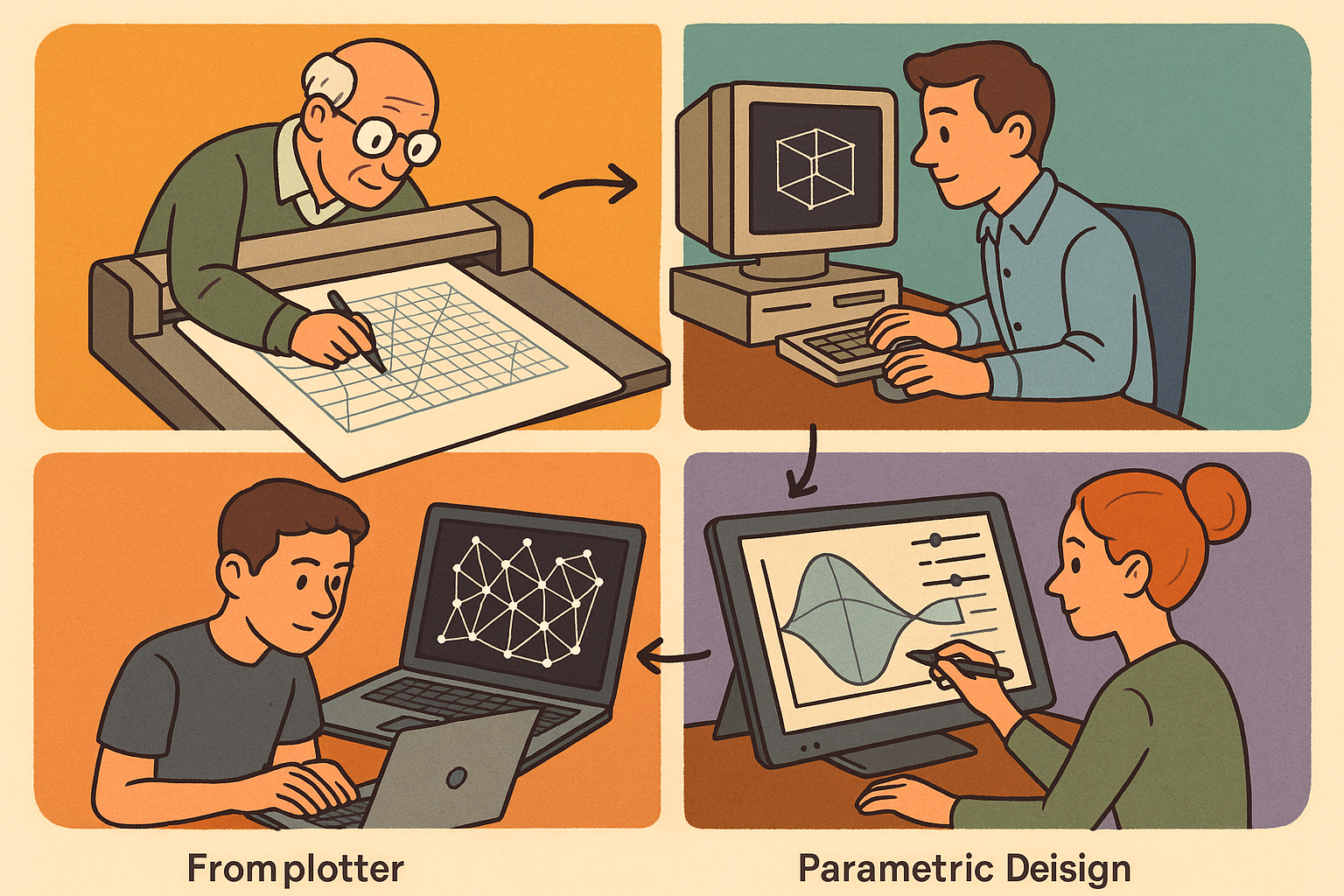Your Cart is Empty
Customer Testimonials
-
"Great customer service. The folks at Novedge were super helpful in navigating a somewhat complicated order including software upgrades and serial numbers in various stages of inactivity. They were friendly and helpful throughout the process.."
Ruben Ruckmark
"Quick & very helpful. We have been using Novedge for years and are very happy with their quick service when we need to make a purchase and excellent support resolving any issues."
Will Woodson
"Scott is the best. He reminds me about subscriptions dates, guides me in the correct direction for updates. He always responds promptly to me. He is literally the reason I continue to work with Novedge and will do so in the future."
Edward Mchugh
"Calvin Lok is “the man”. After my purchase of Sketchup 2021, he called me and provided step-by-step instructions to ease me through difficulties I was having with the setup of my new software."
Mike Borzage
Design Software History: The History and Evolution of Creo: PTC's Impact on Computer-Aided Design
June 17, 2024 3 min read


Introduction
Creo, developed by PTC (Parametric Technology Corporation), has been a significant player in the CAD industry, transforming how engineers and designers approach product development. PTC, founded in 1985, aimed to innovate the CAD landscape with advanced tools and solutions, meeting the growing demand for more sophisticated design software in the late 20th and early 21st centuries.
The Early Days of PTC and the Birth of Pro/ENGINEER
Founding of PTC
PTC was established in 1985 by Samuel Peisakhovich Geisberg. Geisberg's vision was to revolutionize the CAD industry by introducing parametric design, a concept that would allow unprecedented flexibility and power in the design process.
Development of Pro/ENGINEER
In 1988, PTC launched Pro/ENGINEER, the first commercial software to utilize parametric, feature-based, solid modeling. This innovation was a game-changer in the engineering design process, allowing for more dynamic and flexible design iterations. The initial market reception was overwhelmingly positive, quickly establishing Pro/ENGINEER as a critical tool in many design workflows.
Technology and Innovation
The introduction of parametric modeling was a significant technological advancement. This approach allowed designers to define relationships between different elements of a model, ensuring that changes to one element would automatically update related elements. The core technologies and mathematical foundations behind Pro/ENGINEER set a new standard for CAD software, enabling more efficient and accurate design processes.
Evolution and Rebranding to Creo
Transitioning from Pro/ENGINEER to Creo
As the needs of the design industry evolved, so did PTC's offerings. In 2010, the company rebranded Pro/ENGINEER to Creo. This rebranding aimed to unify various design processes and tools under a single, cohesive platform, addressing the growing complexity of product development.
Core Modules and Features
Creo introduced a range of key modules designed to enhance usability, interoperability, and scalability:
- Creo Parametric: The core modeling environment, offering powerful parametric design capabilities.
- Creo Simulate: Tools for structural and thermal analysis, enabling designers to simulate real-world conditions.
- Creo Direct: A direct modeling environment for more intuitive design changes.
These enhancements allowed for greater flexibility and efficiency in the design process, making Creo a versatile tool for various industries.
Technological Advancements
Creo built upon its predecessors with updates in geometric modeling, solid modeling, and parametric design features. The integration with PLM (Product Lifecycle Management) systems further streamlined the design and manufacturing process, ensuring that all aspects of product development were closely aligned and managed.
Impact on Industry and Applications
Adoption Across Various Industries
Creo has been adopted by numerous industries, including aerospace, automotive, and consumer electronics. Its robust toolset and flexibility have made it a preferred choice for many leading companies, driving innovation and efficiency in their design processes.
User Community and Training
PTC has fostered a robust user community, offering extensive training programs and resources to ensure that users can fully leverage the capabilities of Creo. User feedback has played a crucial role in the ongoing improvement and development of the software, ensuring that it continues to meet the evolving needs of the industry.
Academic and Educational Influence
Creo has also made significant inroads into academic institutions, becoming a staple in engineering curricula. By training the next generation of designers and engineers, PTC is helping to prepare students for the demands of modern product development.
Future Prospects and Challenges
Integration with Emerging Technologies
The future of Creo looks promising, with potential integrations with emerging technologies such as AI, machine learning, and IoT. These advancements could further enhance the capabilities of Creo, enabling more intelligent and connected design processes. The potential for cloud-based solutions and collaborative design platforms also offers exciting possibilities for the future.
Challenges and Competitors
Despite its strengths, Creo faces stiff competition from other CAD software providers such as Autodesk, Siemens, and Dassault Systèmes. To maintain its market position, PTC must continue to innovate and address user demands for more intuitive and powerful tools.
Vision for the Future
PTC's strategic direction for Creo involves sustaining innovation while maintaining a user-centric approach. By continuing to evolve and adapt to the changing landscape of design and engineering, Creo aims to remain a leading player in the CAD industry.
Conclusion
The journey of Creo, from its origins as Pro/ENGINEER to its current form, highlights PTC's commitment to innovation and excellence in the CAD industry. Creo has had a profound impact on how products are designed and developed, and its future potential remains bright. PTC's ongoing contributions to the field of design and engineering will undoubtedly continue to shape the industry for years to come.
Also in Design News

Design Software History: From Plotters to Procedural Intent: A Technical History of Generative and Parametric Design Software
January 04, 2026 13 min read
Read More
Semantic Meshes: Enabling Analytics-Ready Geometry for Digital Twins
January 04, 2026 12 min read
Read MoreSubscribe
Sign up to get the latest on sales, new releases and more …



